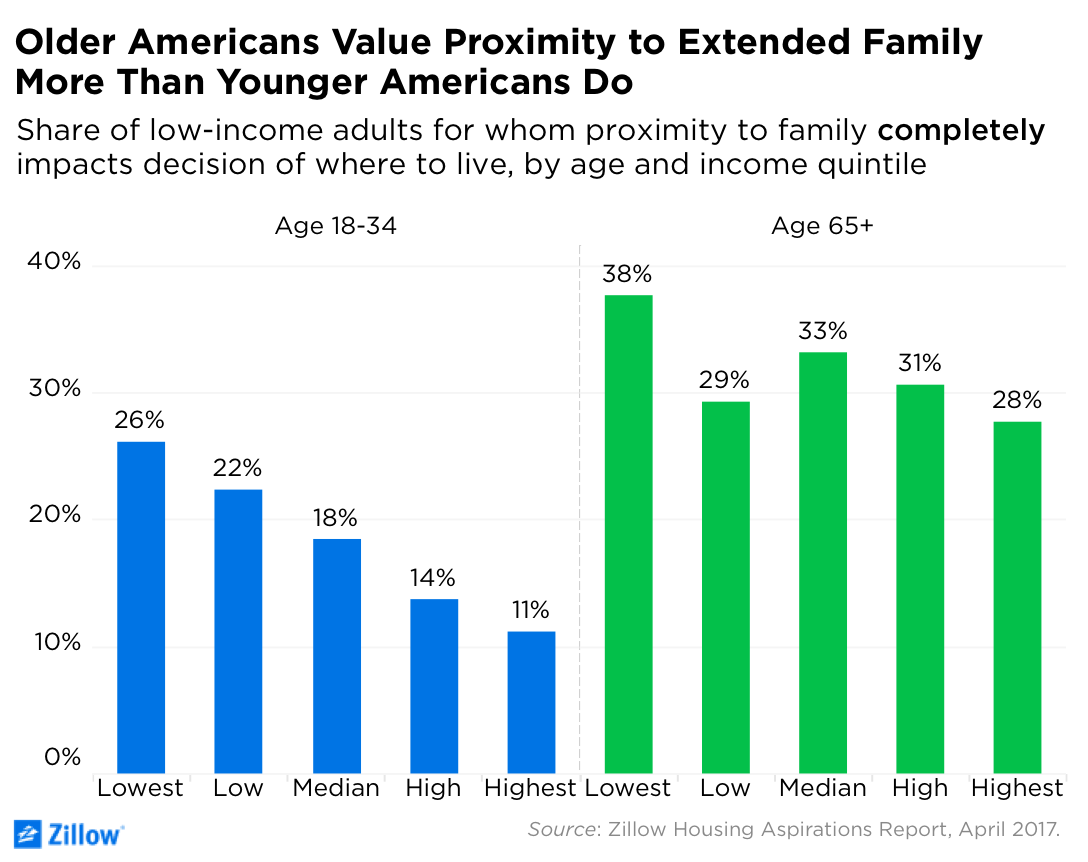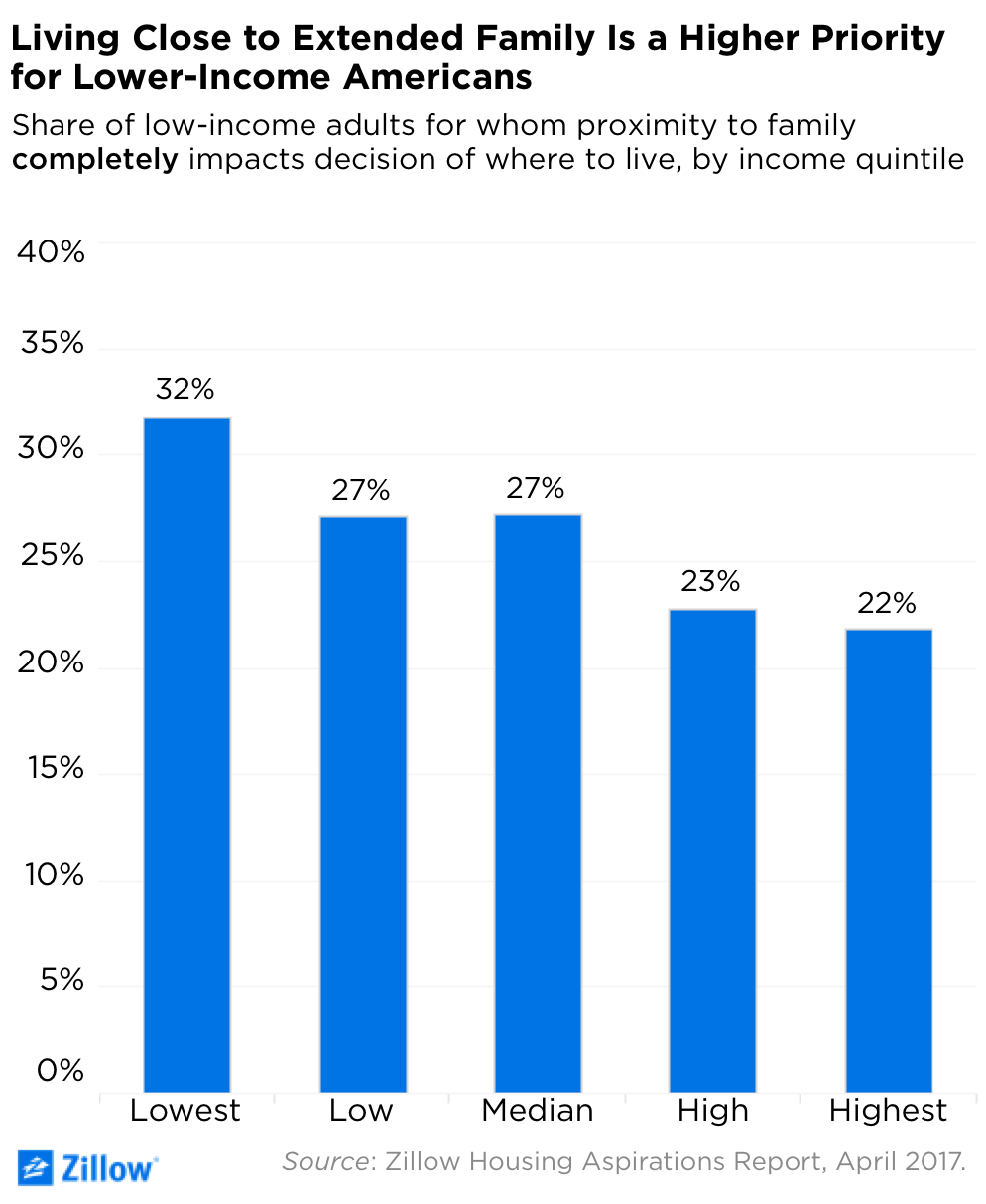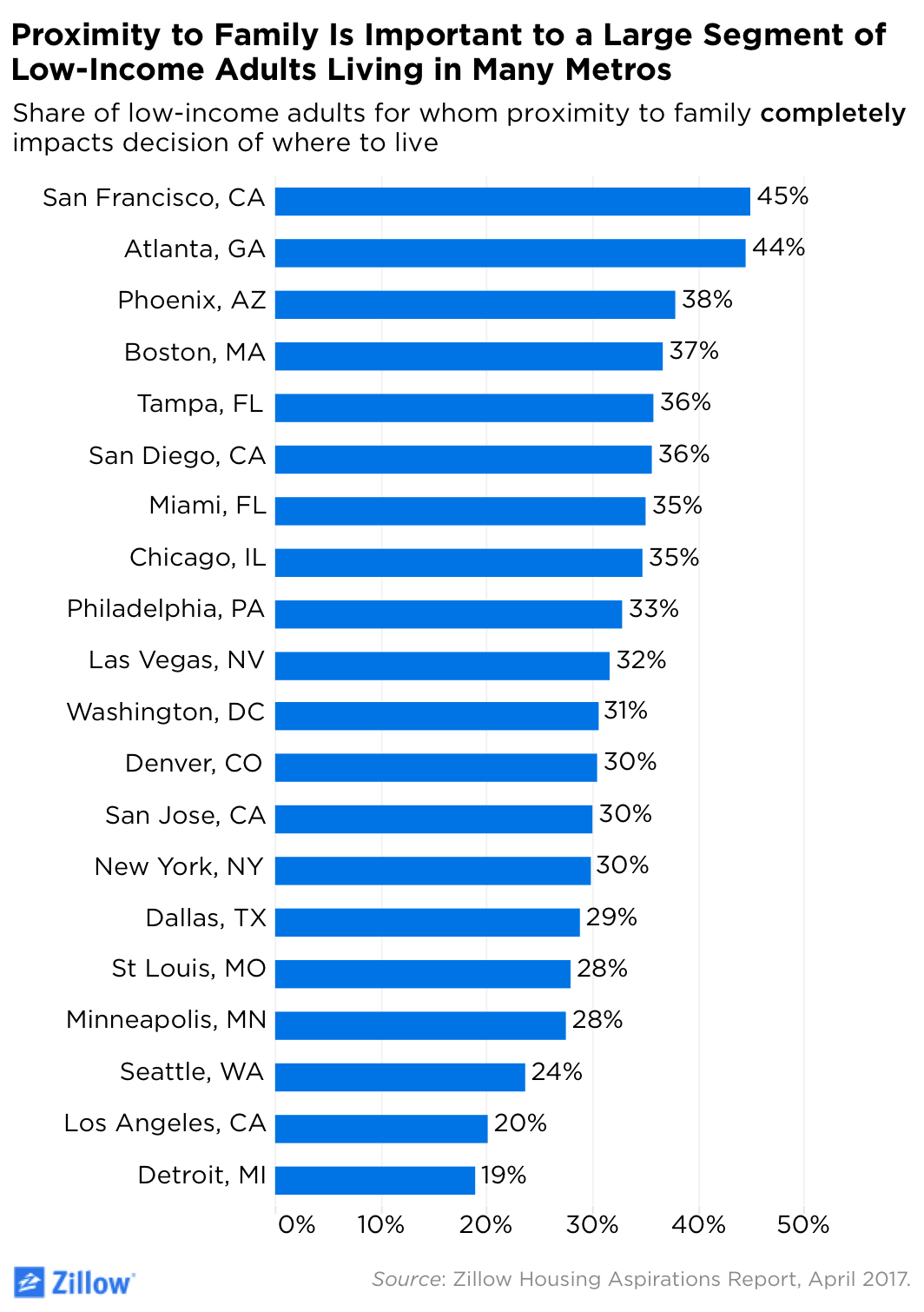Moving to Opportunity: Why Breaking Family Ties Isn’t So Easy
Family is among the most important reasons why some people stay put -- and living close to extended family is a higher priority for lower-income Americans, according to the Zillow Housing Aspirations Report (ZHAR).
- Lower-income and older Americans are more likely to choose where they live based on proximity to extended family.
- Lower-income whites and lower-to-middle-income blacks were most likely to say that proximity to extended family completely drives their decision about where to live.
Thousands of Americans are choosing to move to the handful of 21st-century U.S. boom towns in which jobs are plentiful and homes are relatively affordable. But for many others, particularly lower-income Americans, moving to a new part of the country and weakening often deeply entrenched family ties in their hometowns is not so simple.
Family is among the most important reasons why some people stay put, according to the Zillow Housing Aspirations Report (ZHAR), which asked residents in the country’s 20 largest markets about the extent to which proximity to extended family drives their decision about where to live.
In general, living close to extended family is a higher priority for lower-income Americans. Among survey respondents, 32 percent in the lowest income quintile said proximity to extended family completely affects where they live, compared to 22 percent of respondents in the highest income quintile.
Older Americans tend to value proximity to extended family more than younger Americans, but the same income trends hold. Among respondents aged 65 or older, 38 percent in the lowest income quintile said that proximity to extended family completely drives their decision about where to live, versus 28 percent of older respondents in the highest income quintile. Among younger adults (aged 18-34), 26 percent of lower-income respondents said that proximity to extended family drives where they live, compared to 11 percent of younger adult respondents in the highest income quintile.

Similar patterns emerge across racial and ethnic groups: Lower-income whites, blacks, Hispanics and Asians were all more likely than their higher-income peers to say that proximity to family completely drives where they live. Across all groups, low-income whites and low-to-middle-income blacks were most likely to say that proximity to extended family completely drives where they live.
Controlling for age and income differences across racial and ethnic groups, Hispanics were 20 percent more likely than whites to say that proximity to family completely impacts their decision about where to live. Blacks were 20 percent less likely than whites to say that family completely impacts where they live. There were no statistically significant differences between whites and Asians.
Across the 20 markets surveyed, low-income adults in San Francisco, Atlanta, Phoenix and Boston were most likely to say that proximity to extended family completely drives where they live. Low-income adults in Detroit, Los Angeles, Seattle and Minneapolis were least likely to base where they live on proximity to extended family.[1]
Why It Matters
The idea of a flexible and mobile labor force, where workers can shift easily to meet the evolving geography of economic opportunity, is intellectually appealing. But in practice, many Americans – particularly lower-income Americans – are tied to the places where they live. It is not so easy for them to pack up and move to boom towns with plentiful jobs or to escape high-cost markets for more affordable parts of the country.
There are costs involved in relocating, and there has been substantial recent attention to the share of young Americans who turn to family for help with housing expenses. Americans of all ages rely on social networks – family and friends – for assistance with a wide range of basic needs: 33 percent of American households with children rely on extended family for help with childcare, while 17 percent get help from extended family in covering living expenses. And 11 percent turn to extended family for help with eldercare.
In the case of both childcare and eldercare, it is neither the poorest nor the wealthiest Americans who are most reliant on extended family. Rather, households in the fourth quintile – upper middle class households – are most likely to say they rely on extended family for help with childcare (40 percent) and eldercare (14 percent).
Still, it’s the lower-income group whose decisions about where to live are most affected by family ties.
[1] Controlling for age, income and race/ethnicity, there are no statistically significant cross metro differences in the propensity of lower-income residents to base their decision of where to live on proximity to extended family.
Related:




